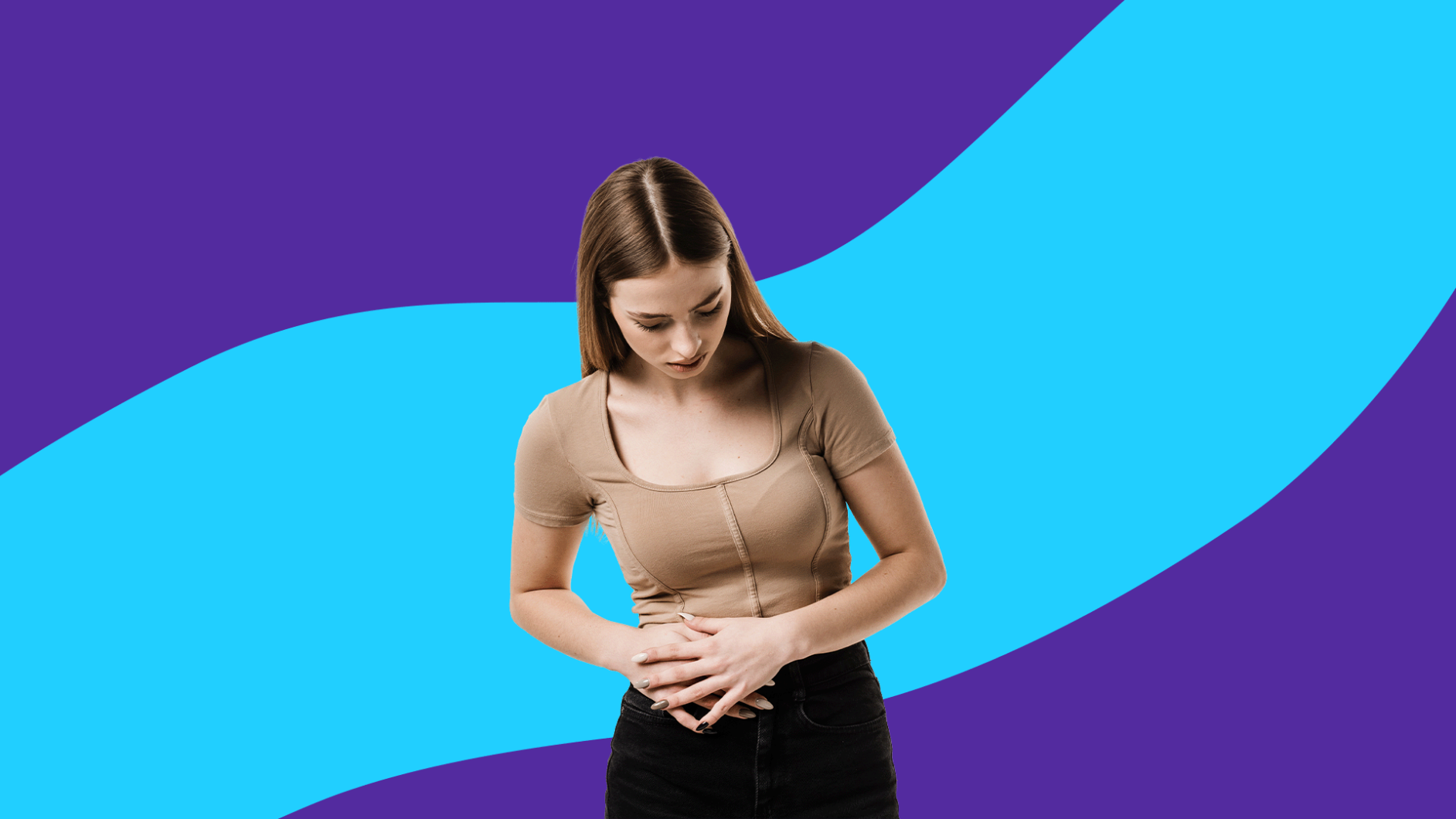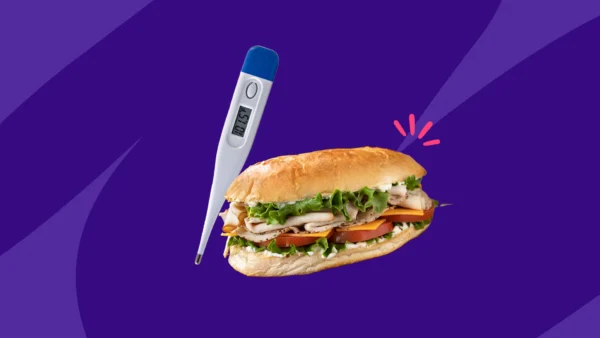Lower abdominal pain in females can feel dull, sharp, shooting, or cramp-like. Depending on the cause of the pain, it may radiate to the pelvis, back, or other areas of the body. Lower abdominal pain can last a couple of hours, or it could be a sign of a chronic issue that needs management.
Read on for possible causes of lower abdominal pain in women who are not pregnant, additional common symptoms, when to get medical advice or treatment, and how to treat the pain.
What causes lower abdominal pain in females who aren’t pregnant?
There are causes of lower abdominal pain other than pregnancy that arise from different parts of the body.
Gastrointestinal upset
For starters, several kinds of gastrointestinal issues might be at play. Bloating, gas, constipation, and diarrhea are some examples, according to Supriya Rao, MD, a quadruple board-certified physician at Lowell General Hospital in Lowell, Massachusetts.
“Those issues typically aren’t severe,” Dr. Rao says, “and can be treated at home with rest, fluids, and over-the-counter (OTC) medications.” You can treat diarrhea by drinking plenty of water or sports drinks and eating small amounts of mild foods. Anti-diarrheal medications, such as Pepto Bismol (bismuth subsalicylate) and Kaopectate (docusate-calcium), can also help.
Constipation can also cause lower abdominal pain. You can typically treat it without going to the doctor by engaging in physical activity, managing stress, drinking enough fluids, and eating a diet high in fiber and low in dairy. Laxatives and stool softeners, such as Metamucil (psyllium) and Colace (docusate sodium), can also help relieve symptoms.
Stomach illnesses such as the stomach flu and food poisoning can also cause lower abdominal pain. The two share common symptoms, such as:
- Diarrhea
- Nausea or vomiting
- Possible fever, chills, and headache
The key difference between stomach flu and food poisoning is how quickly the symptoms show up and last. With food poisoning, common symptoms will start within hours and stop within 24–48 hours. With stomach flu, you might not notice symptoms until 12–48 hours after contact with the virus or bacteria that causes it, and you might not feel completely better until three to five days later.
To treat stomach flu at home, Dr. Rao suggests resting and getting plenty of fluids, such as water or Pedialyte, to stay hydrated. Food poisoning typically needs to run its course, as well. But it’s also important to rehydrate with water and replace electrolytes. (Pedialyte can help with the latter.) Eating bland foods can also help, as well as antidiarrheals such as Imodium A-D (loperamide).
As far as medications, an antiemetic such as Dramamine (dimenhydrinate) can help with nausea. Additionally, consider antidiarrheals, such as Imodium A-D and Pepto-Bismol, if needed.
Seek medical attention if you have severe vomiting, diarrhea, or signs of dehydration.
Inflammatory bowel syndrome
Irritable bowel syndrome (IBS) is a functional disorder that can cause abdominal pain or stomach cramps, diarrhea, constipation, bloating, or gas. You can treat symptoms of IBS with dietary changes, cognitive behavioral therapy, or medication. The medication your healthcare provider may recommend depends on the symptoms you’re experiencing. For example, laxatives such as Dulcolax (bisacodyl) can help with constipation, while antidiarrheals such as Kaopectate (docusate-calcium) can treat diarrhea. Additionally, a doctor may prescribe selective serotonin reuptake inhibitors (SSRIs), such as Prozac (fluoxetine).
Inflammatory bowel disease
Inflammatory bowel diseases (IBDs), such as Crohn’s disease and ulcerative colitis, can share some symptoms with IBS. People with IBD may also experience a loss of appetite, weight loss, fatigue, joint pain, or rectal bleeding.
Like IBS, IBD is chronic but manageable. The primary goal when treating IBD is to reduce any inflammation triggering your gastrointestinal symptoms, like lower abdominal pain. To treat IBD, your healthcare provider may recommend dietary changes, lifestyle modifications, or medication, such as anti-inflammatory drugs or corticosteroids. They may recommend surgery if diet and medication are ineffective.
Gallstones or kidney stones
Gallstones and kidney stones can also cause pain in the lower abdomen. Gallstones are hard lumps found in the gallbladder. Causes of gallstones vary, and there are two main types: those made of cholesterol and those made of bilirubin.
Cholesterol gallstones are the most common. Despite their name, they’re not related to cholesterol levels in the blood but instead occur when there’s too much cholesterol in bile. Stones made of bilirubin are called pigment stones and occur when there’s too much bilirubin in bile. Both types of gallstones are more common in females than males.
Other than lower abdominal pain, symptoms of gallstones may include:
- Back pain
- Chest pain
- Nausea and vomiting
- Fever and chills
- Jaundice
- Dark-colored urine
Without treatment, gallstones may have serious complications. Typically, surgery is required for the treatment of gallstones. Pain medications, such as nonsteroidal anti-inflammatory drugs (NSAIDs) like Dyloject (diclofenac), may be used first to reduce pain.
While gallstones develop in the gallbladder, kidney stones develop in the urinary tract. Kidney stones can cause abdominal pain as well as the following symptoms:
- Severe pain in the back that may extend to the groin
- Nausea and vomiting
- Blood in urine
- Painful urination
- Foul-smelling or cloudy urine
- Fever and chills
- Increased urge to urinate
Kidney stones are sometimes—not always—severe. As far as kidney stone treatment, drinking water can help the stone pass naturally. If the stone is too large, surgery may be needed. NSAIDs, such as ibuprofen or naproxen, can also help manage the pain.
Inflammation in the appendix or pancreas
Appendicitis is one of the most serious causes of abdominal pain. It occurs when the appendix gets clogged, infected, and inflamed, causing pain in the abdomen. Appendicitis pain typically occurs in the right lower part of the abdomen. Other symptoms of appendicitis may include:
- Increased urination or an increased urge to urinate
- Fever
- Nausea or vomiting
- Pain
- Loss of appetite
- Diarrhea
- Pain around the belly button
Appendicitis treatment typically involves surgery to remove the appendix. In uncomplicated cases, the appendix may be removed with a smaller incision and a laparoscopy. Some cases of appendicitis can be treated first with antibiotics such as Zosyn (piperacillin-tazobactam) and Rocephin (ceftriaxone) instead of surgery.
Pancreatitis occurs when the pancreas is inflamed. Other than abdominal pain, symptoms of pancreatitis include:
- Pain in the upper area of the stomach that can extend to the back
- Tenderness when touching the stomach
- Fever
- Rapid pulse
- Upset stomach
Pancreatitis can range from mild to severe. Treatment depends on whether it’s acute or chronic but may involve hospitalization. Pancreatitis treatment may include a mix of IV fluids, antibiotics, and pain medications.
Menstrual cramps and ovulation
Ovulation happens toward the middle of the menstrual cycle when the ovaries release an egg. It’s common to have pain in the lower abdomen when not pregnant during that time of the cycle—especially on one side. Other symptoms include:
- Spotting
- Tender breasts
- Bloating
- Slightly higher temperature
- Lower back pain
- A stronger sense of smell
Menstrual pain is usually nothing to worry about, according to Kara McElligott, MD, OB-GYN, and medical advisor at Mira. Menstrual pain usually goes away on its own and can be relieved with the help of at-home period cramp treatments, such as light exercise, heat therapy, chamomile tea, and NSAIDs.
Reproductive and sexual health conditions
There are a variety of female reproductive conditions that can cause lower abdominal pain in females. Examples include ovarian cysts, endometriosis, uterine fibroids, sexually transmitted infections (STIs), uterine prolapse, and ectopic pregnancy.
Ultimately, the symptoms (and the specific treatment) depend on the condition. Dr. McElligott stresses the importance of seeing a women’s healthcare provider for treatment if symptoms persist.
Reproductive cancers or precancers
“If cancer is the underlying cause of abdominal pain, it may be found in the uterus, cervix, fallopian tubes, or ovaries,” Dr. McElligott says.
Other symptoms of cancers in the reproductive organs include:
- Irregular vaginal bleeding
- Vaginal bleeding after menopause
- Pain or pressure in the pelvic area
- Gastrointestinal distress
- Unusual vaginal discharge
- Pain during sex
In such cases, Dr. McElligott says a healthcare provider may carry out a lab test, biopsy, ultrasound, or CT scan for an accurate diagnosis. Treatment for gynecologic cancers depends on various factors but may include surgery, radiation therapy, chemotherapy, hormone therapy, immunotherapy, or targeted therapy.
Pelvic inflammatory disease
Pelvic inflammatory disease (PID) results from microorganisms from the cervix and vagina moving to the upper genital tract.
PID can cause pain in the lower abdomen in females, as well as other symptoms that include:
- An increase in vaginal discharge
- Irregular vaginal bleeding
- Fever
- Pain with urination or intercourse
You shouldn’t delay medical treatment for PID. Prompt treatment with antibiotics, such as doxycycline, can prevent damage to the female reproductive organs, although it won’t reverse scarring. The sooner the treatment, the less risk of infertility due to damage to the fallopian tubes and the less risk of serious disease for the woman.
How is the cause of lower abdominal pain in females who aren’t pregnant diagnosed?
With so many possible causes, pinpointing the one causing lower abdominal pain may involve a variety of factors. Dr. Rao and Dr. McElligott start by asking some of the following questions:
- When did your symptoms start?
- Are you experiencing any other symptoms?
- Where is the pain?
- How severe is the pain?
- What does the pain feel like (i.e., crampy, burning, or sharp)?
- Does the pain come and go, or is it constant?
- Does the pain radiate anywhere else in the body?
- Can you pinpoint the location on the abdomen, or does the pain feel diffuse?
- Have you found that anything makes the pain better or worse, such as certain positions or medications?
- Do you drink alcohol? Smoke? Exercise?
- When was your last menstrual cycle?
They may also ask you to share your family medical history, any pre-existing medical conditions, and medications you’re taking. They may also perform an examination and run further tests as needed.
“Afterward, tests such as blood tests, urine tests, CT scans, or even an endoscopy or colonoscopy may be ordered,” Dr. Rao adds.
If the issue has a reproductive cause, Dr. McElligott mentions ultrasounds, pregnancy tests, and pelvic examinations.
Quick to assume the worst? That’s understandable. It may help to remember that using a particular test doesn’t automatically mean you have a correlating medical condition. “Note that additional testing is often needed to rule out other causes, too,” Dr. McElligott says.
Dr. Rao explains that healthcare providers categorize stomach discomfort by nature, duration, and location. For example, localized discomfort in the lower right side of the stomach could be appendicitis. Additionally, she recommends receiving immediate medical care if the pain is acute, sudden, or severe, even if it lasts for a short period. Being unable to keep liquids down is another sign of a problem, as well as developing a fever or experiencing symptoms that don’t improve in a few days.
Most importantly, address symptoms accordingly
Causes of lower abdominal pain in females may include gastrointestinal problems, reproductive or sexual health issues, or more fleeting illnesses or symptoms. Causes of general lower abdominal pain in women may resolve on their own without treatment. However, if lower abdominal pain continues, worsens, is sudden or severe, or is accompanied by fever, it could be a sign of something more serious and require a trip to the emergency room. Only your healthcare provider can rule out infection or other serious health conditions.
Sources
- Food poisoning or stomach flu? How to tell the difference, UNC Health Talk (2023)
- Dehydration, Cleveland Clinic (2023)
- Inflammatory bowel disease (IBD), Mayo Clinic (2022)
- What’s the difference between gallbladder and kidney stones?, Cleveland Clinic (2022)
- Gallstones, Penn Medicine
- Appendicitis, Cleveland Clinic (2023)
- Pancreatitis, Mayo Clinic (2023)
- 6 symptoms of uterine, ovarian, and cervical cancer you shouldn’t ignore, New York Presbyterian
- Gynecologic cancers, Yale Medicine
- Pelvic inflammatory disease (PID), Mayo Clinic (2022)











